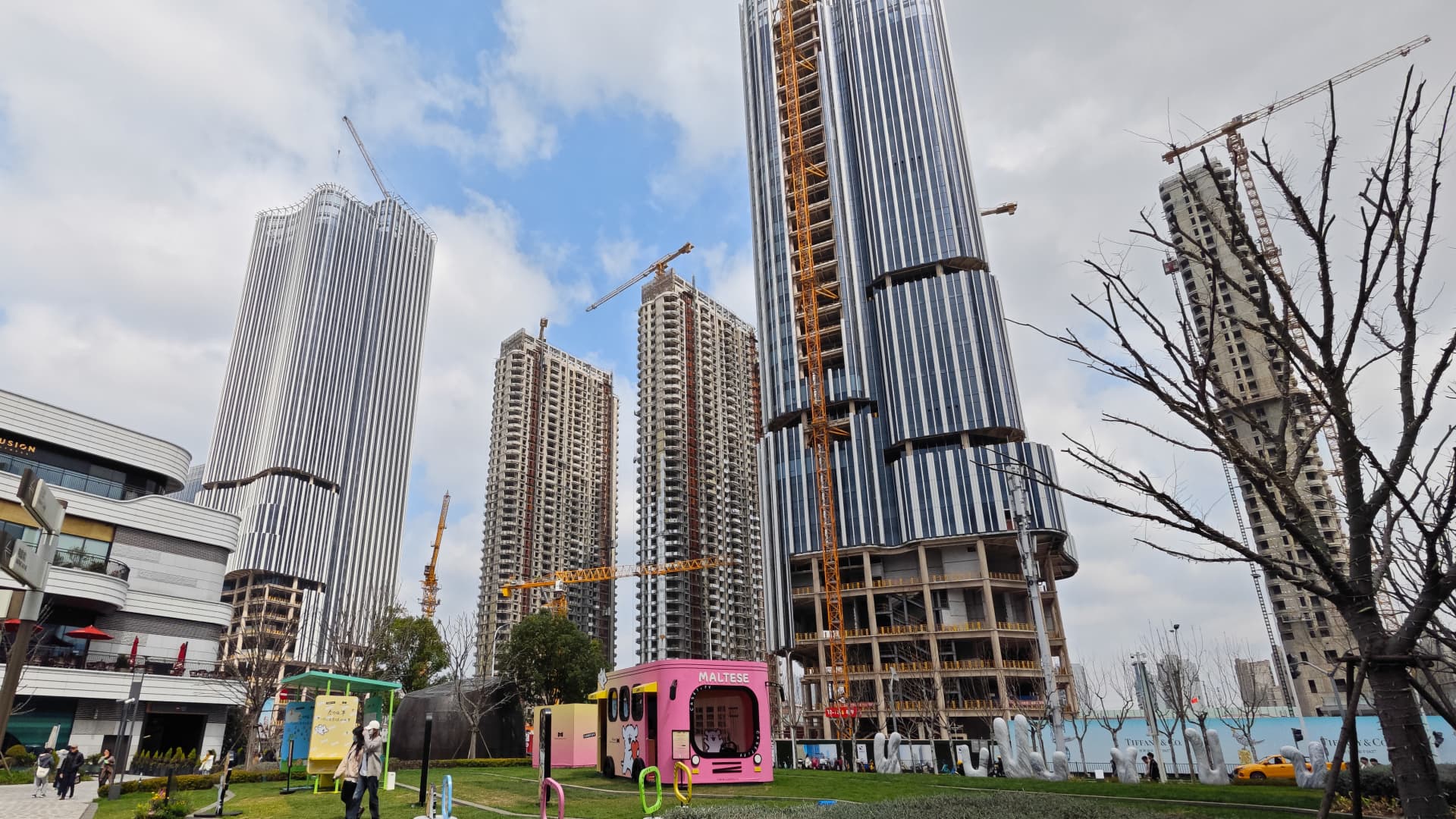China kicks off the year on strong note as retail, industrial data tops expectations

High-rise residential and commercial buildings are being constructed near Dongyu Road, Qiantan, in the Pudong New Area of Shanghai, China, on March 15, 2024.
Nurphoto | Nurphoto | Getty Images
BEIJING — China on Monday reported economic data for the first two months of the year that beat analysts’ expectations.
Retail sales rose 5.5%, better than the 5.2% increase forecast in a Reuters poll, while industrial production increased 7%, compared with estimates of 5% growth.
Fixed asset investment rose by 4.2%, more than the forecast 3.2%.
The unemployment rate in February for cities came in at 5.3%.
Online retail sales of physical goods rose by 14.4% from a year ago during the first two months of the year.
Investment into real estate fell by 9% in the first two months of the year from a year ago. Investment in infrastructure rose by 6.3% while that in manufacturing increased by 9.4% during that time.
Economic figures for January and February are typically combined in China to smooth out variations from the Lunar New Year, which can fall in either month depending on the calendar year. It is the country’s biggest national holiday, in which factories and businesses remain closed for at least a week.
This year, the number of domestic tourist trips and revenue during the holiday grew compared with last year as well as pre-pandemic figures from 2019. But Nomura’s Chief China Economist Ting Lu pointed out that “average tourism spending per trip was still 9.5% below pre-pandemic levels in 2019.”
Retail sales did not rebound from the pandemic as strongly as many had expected as consumers have grown uncertain about their future income.
New loans in February missed expectations and fell from the prior month, “even after adjusting for seasonality,” Goldman Sachs analysts said in a report Friday.
“The persistent weakness in property transactions and low consumer sentiment may continue to weigh on household borrowing,” the analysts said. “More monetary policy easing is needed.”
People’s Bank of China Governor Pan Gongsheng said earlier this month there was still room to cut the reserve requirement ratio, or the amount of cash banks need to have on hand.
Goldman expects 25 basis point cuts to that ratio in the second quarter of this year, as well as in the fourth quarter.
Real estate, which accounts for a significant part of household assets, has slumped over the last few years after Beijing’s crackdown on developers’ high reliance on debt for growth.
The average property price for 70 major Chinese cities fell by 4.5% in February from January on a seasonally adjusted, annualized basis, according to Goldman Sachs’ analysis using a weighted average of official figures.
That’s steeper than the 3.5% month-on-month drop in property prices in January, Goldman Sachs said.
“Our high frequency tracker suggests that 30-city new home transaction volume declined by 53.2% [year-on-year] in early March after adjusting to the lunar calendar basis,” the analysts said in a report.
Chinese authorities did not reveal significant new support for the massive real estate sector during an annual parliamentary meeting that ended last week.
Instead, Beijing emphasized the country’s focus on developing manufacturing and technological capabilities.
Data earlier this month showed China’s exports for January and February rose by 7.1% in U.S. dollar terms, beating expectations for a 1.9% increase.
Imports climbed by 3.5% during that time, also topping Reuters’ forecast for growth of 1.5%.
This is a developing story. Please check back for updates.









